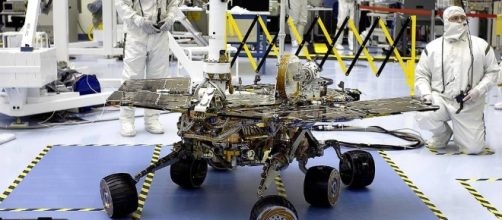Marathon Valley has provided interesting targets for study since a year ago; however, opportunity may soon move to another research site on Mars. Using NASA´s Mars Reconnaissance Orbiter, scientists detected clay minerals, which is evidence of the existence of water. On this region, the rover scuffed reddish material with a wheel, which was then examined.
Reddish deposits
On June 9, 2016 (sol 4400) Opportuniyhad been performing science investigations for the evidence of clay minerals and getting close to the conclusion of studies there. The rover´s own imaging capabilities detected streaks of red stone, which were taken into consideration for examination.
As the rover approached the red material deposits, it scraped portions of the reddish material with its own wheel.
On June 11-12 (Sols 4404 and 4003), the rover used the Alpha Particle X-ray Spectrometer to perform a mapping of the elemental constituents of the sample. Within the reddish stuff scientists found high contents of sulfur; the highest that have been found on the red planet. There is also proof that these zones contain large quantities of magnesium sulfate.
Precipitating solutions
Although it´s thought that the zone does not contain clay, the mineral magnesium sulfate provides strong evidence that it may have formed from the precipitation of water. It´s believed that fractures running through the bedrock could have formed the channels through which soluble materials could have been carried, altering the bedrock and creating the red zone patterns.
Driving out of the site
After completing investigations on this region, opportunity drove away, exiting through the southern part of the valley and heading southeast to an area where signs of clay mineral had been observed from space.As of June 14, 2016, the power capacity of the rover´s solar panels is 658 watt hours and has driven 42.81 km (26.60 miles), which is a little over a marathon, which consisted of 42.195 km (26.219 miles), finishing it in roughly 11 years and two months.Opportunity was launched on July 7, 2003 and landed on Meridian Planum on January 25, 2004, three weeks later than its twin spacecraft Spirit, which landed on the opposite side of Mars on January 4, 2004.

